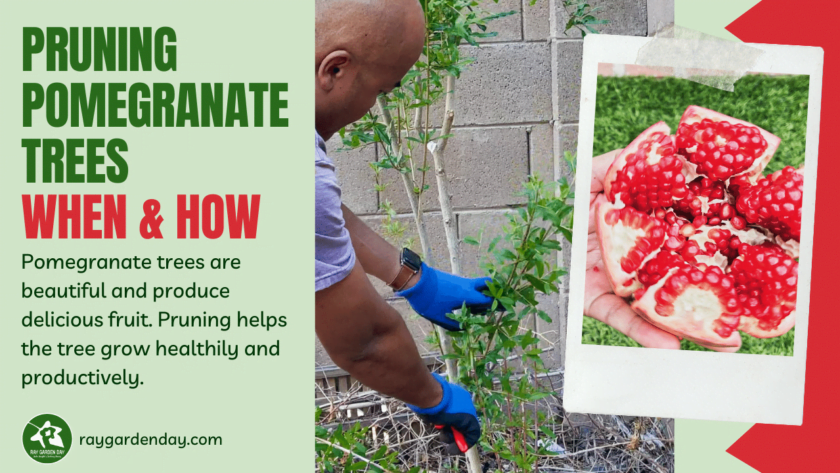Pomegranate trees are beautiful and produce delicious fruit. Pruning helps the tree grow healthily and productively. In this blog post, I will discuss when and how to prune your pomegranate tree for optimal results!
Pomegranate can be grown as a shrub or tree and used in hedging or garden; therefore, use the right pruning strategy based on your intended use. For optimal fruit production, keeping the number of trunks between three to six is recommended. We have a Parfianka pomegranate tree on a single trunk, a Red Silk pomegranate with two trunks, and a Wonderful pomegranate with five main trunks. They are all thriving, so feel free to deviate from the recommendations and have fun experimenting.
Time of year to prune pomegranate
Prune pomegranate trees in late winter and early spring before rapid growth begins. This is the best time to prune because it will ensure that the tree has time to recover from pruning before the growing season begins.
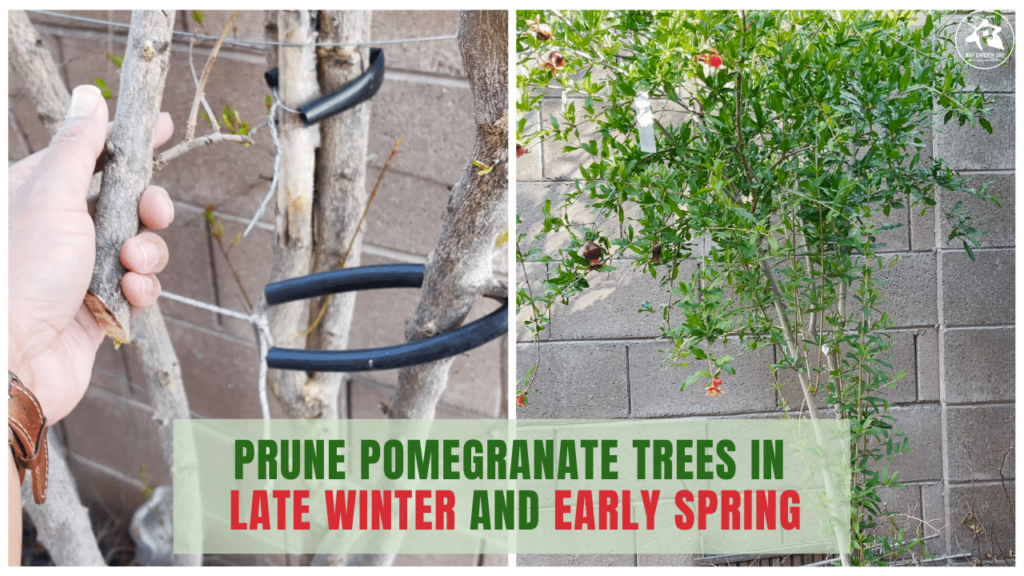
Pomegranate late winter pruning
Prune pomegranate in late winter just before buds break in spring. This ensures that the danger of frost has passed and the period where any exposed wounds have been lessened before new growth and wound sealing process begins. Furthermore, pomegranate trees lose their leaves in winter, exposing bare branches and making pruning decisions easier.
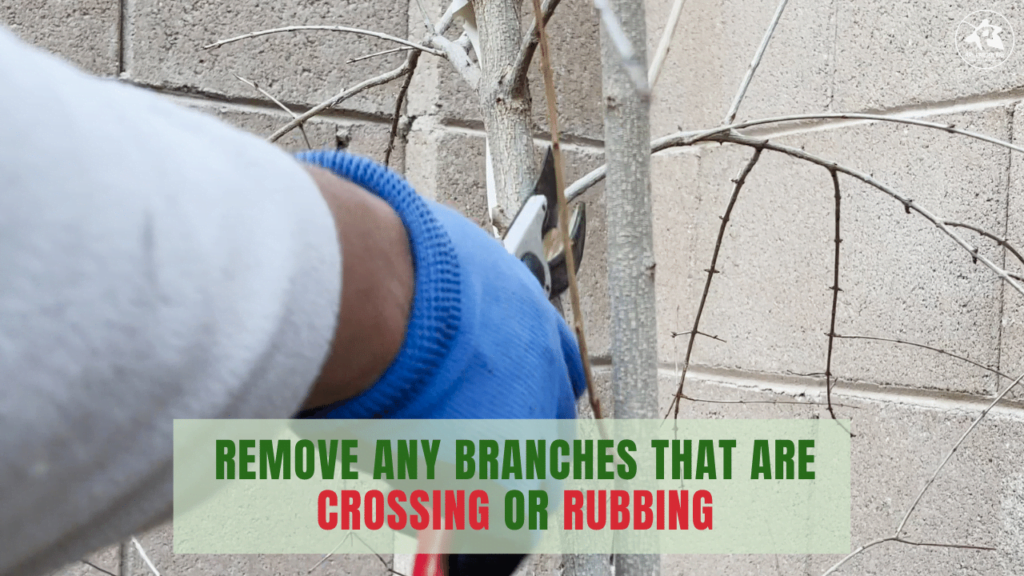
How to winter prune pomegranate?
- Use clean pruning shears or loppers and make clean cuts. This will help prevent infection and encourage healing.
- Prune out any dead or diseased wood first.
- Next, remove any branches that are crossing or rubbing against each other.
- Finally, use heading back cuts on any branches longer than the desired length.
Pomegranate spring pruning
Spring pruning of pomegranate trees is done after the danger of frost has passed and new growth has begun. Pruning in spring will help shape the tree and encourage new growth. Pruning in spring will also help to control the size of the tree.
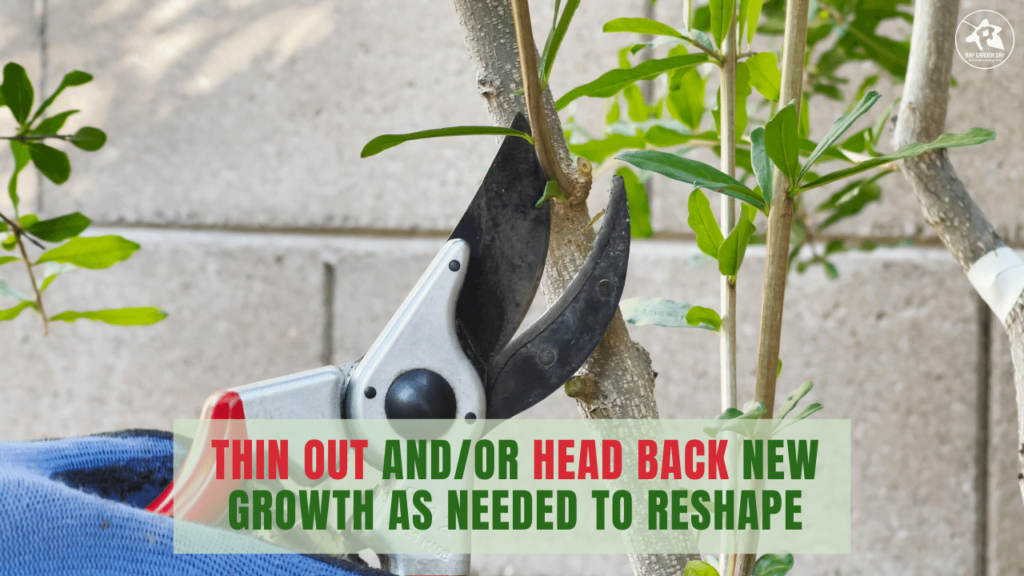
How to prune a pomegranate tree in spring?
- Start by pruning out any dead or diseased wood.
- Next, thin out any branches crossing or rubbing against each other.
- Thin out and/or head back new growth as needed to reshape the pomegranate tree.
- When heading back small branches, make the cut about 1/4 inch from a bud or branch pointing toward the desired new growth, usually, one pointing out and away from the main trunk.
- Thin out the middle of the plant to allow light and air to reach pomegranate flower blooms for a better fruit set.
- Finally, prune only enough to direct growth and correct any branch structural weaknesses.
Pruning pomegranate suckers and water sprouts
Pruning pomegranate suckers and water sprouts are essential to encourage the tree to put its energy into growth and fruit production. Suckers are small, fast-growing shoots that come up from the roots or base of the pomegranate tree. Water sprouts are shoots that develop on the trunk and branches of the tree. They can compete with the main trunk for water and nutrients, resulting in a smaller fruit crop and overall tree health.
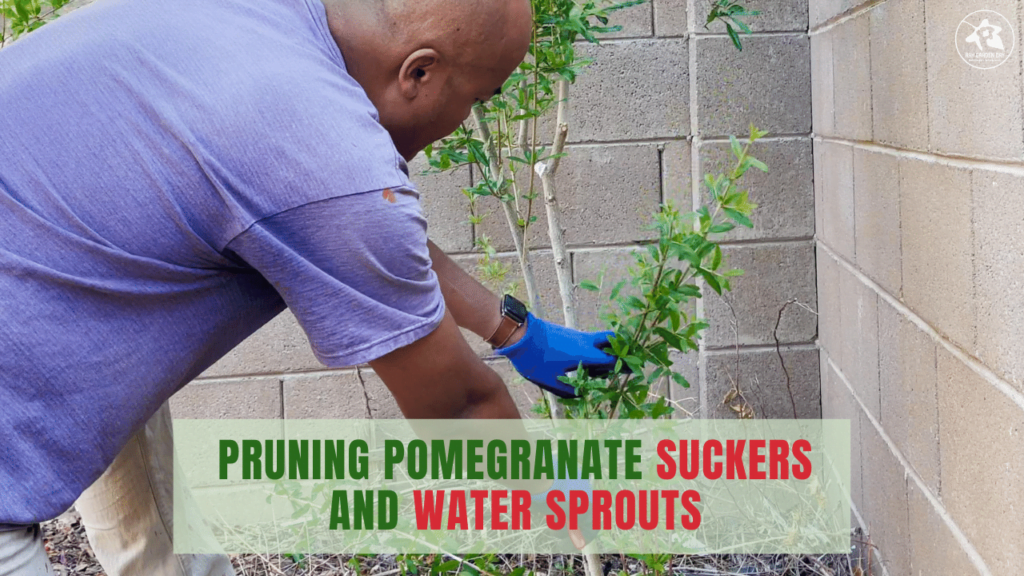
Pruning of suckers and water sprouts begins early in the spring growing season and through early summer.
How to remove pomegranate tree suckers and water sprouts?
- Use hands to pull or pruners to cut suckers back to the ground or the tree’s main trunk. Move some of the underlying soil to make your cut at the base of the sucker.
- Use pruners to cut pomegranate tree water sprouts back to the main trunk or branch from which they are growing. Cut as close to the main trunk as you can to help your pomegranate tree heal faster.
Pruning young pomegranate trees
Pruning young pomegranate trees is critical for the trees to be trained to encourage a strong structure, promote new growth, and keep to an ideal size. Therefore, pruning should begin when the pomegranate tree is planted and continue as the tree grows.
Prune begins after planting time
At planting of the pomegranate tree, thin out only dead, diseased, and broken branches. Pomegranate trees bought from garden nurseries have been correctly pruned but if you have excess trunks, then thin out to leave no more than six. Cut any suckers back to the ground, and remove water sprouts back to the main trunk. Avoid topping off or cutting back the leader will encourage the young pomegranate tree to grow upright to a desired height faster rather than growing out sideways. This is particularly important if a pomegranate tree is growing next to a wall or fence as it can cause rubbing against the wall.
Second year pruning of pomegranate year
In the second year, the pruning of pomegranates should happen in late winter to early spring before new growth begins. Prune any suckers back to the ground, and water sprouts back to the main trunk or branch they are growing from. Use heading cuts on any branches that are too long. Avoid topping off or cutting back the leader.
Third year and every year thereafter pruning
Follow the regular pruning cycle; annually from late winter to early spring before new growth begins. Your first priority should be to remove any suckers and water sprouts. Then use the pruning strategies outlined above to get the desired outcome. Remember that you will only need to give your pomegranate tree a light prune for best fruit production.
From my years of growing pomegranates, pruning them has been my favorite activity. It’s gratifying to see the trees respond and reward you with an abundance of fruits with minimal care. What pomegranate variety are you growing? What tips would you add for someone just getting started? Let us know in the comments below! Happy gardening!
